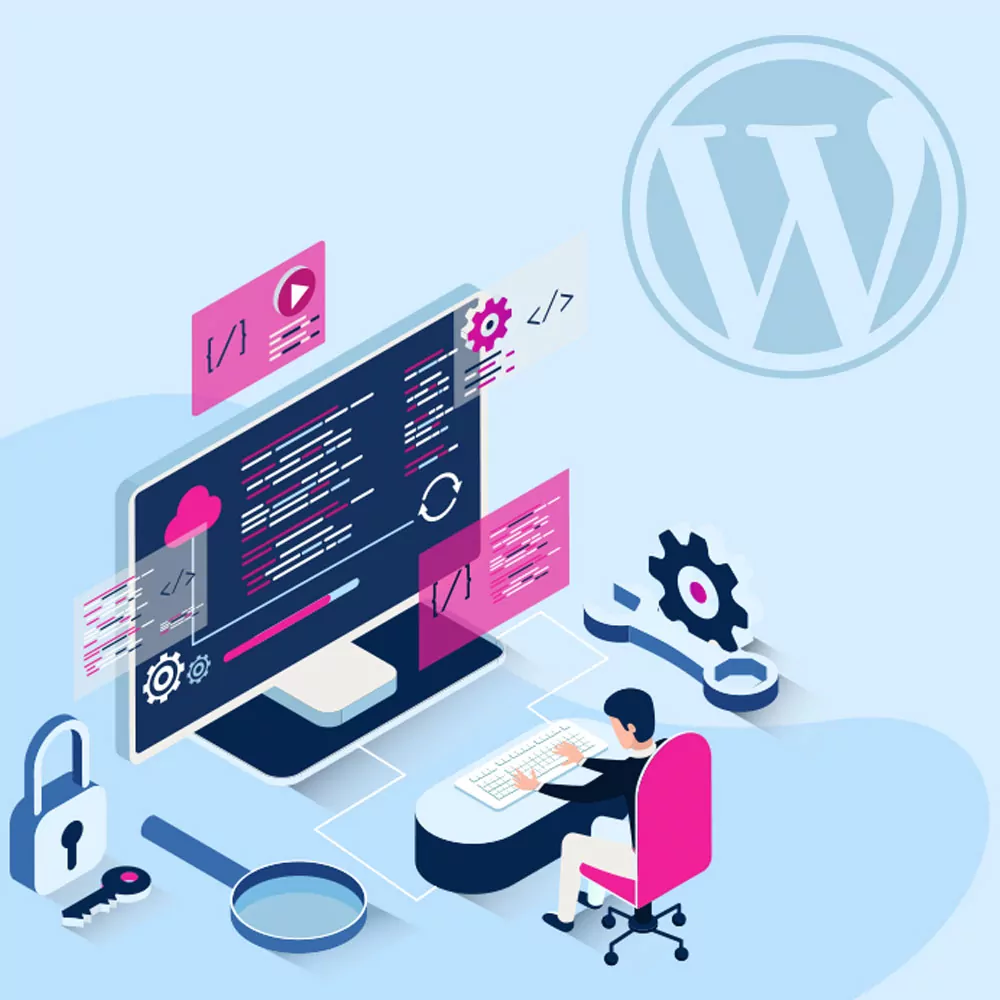
Best Website Design Tips for 2024: Creating Websites That Work and Wow
Your website can make or break your online success. With the web constantly evolving, staying ahead of the curve is crucial. That’s where the best website design tips come in. These aren’t just about making your site look pretty – they’re about crafting a powerful online tool that drives results. Whether you’re after more sales, higher engagement, or simply want to outshine your competition, these tips will set you on the right path. Let’s dive into the best website design tips for 2024 that will transform your site from just another webpage to a standout digital powerhouse.

Best Website Design Tips For Creating Websites That Work And Wow
Understanding the Importance of Good Web Design
Before we dive into the best website design tips, let’s talk about why good design matters. A well-designed website can:
- Make a great first impression
- Build trust with your visitors
- Help you stand out from competitors
- Improve your search engine rankings
- Increase conversions and sales
Now, let’s explore the best website design tips for 2024 that will help you achieve these benefits.
Put Your Users First
One of the best website design tips you’ll ever hear is to focus on your users. After all, they’re the ones who will be using your site. Here’s how to create a user-centric design:
- Know your audience: Research your target users. What are their needs, preferences, and pain points? Use this information to guide your design decisions.
- Create user personas: Develop fictional characters that represent your typical users. This can help you make design choices that cater to their needs.
- Map the user journey: Think about the steps users will take on your site. Make sure each step is clear and easy to follow.
- Use clear calls-to-action (CTAs): Tell users what you want them to do next. Use action-oriented language like “Get Started” or “Learn More”.
- Gather and act on feedback: Use surveys, user testing, and analytics to understand how people are using your site. Then make improvements based on this data.
Remember, a website that’s easy to use is more likely to keep visitors coming back. That’s why user-centric design is one of the best website design tips you can follow.
Make It Work on All Devices
In 2024, people are using more devices than ever to browse the web. Your website needs to look good and work well on all of them. This approach, known as responsive design, is one of the most crucial best website design tips. Here’s how to do it right:
- Embrace mobile-first design: Start by designing for the smallest screens first, then scale up to larger ones. This ensures a good experience on mobile devices, which account for the majority of web traffic.
- Use flexible layouts: Your design should adapt seamlessly to different screen sizes. Use CSS grid or flexbox for more control over your layout.
- Optimise images and media: Use responsive images that load different sizes based on the user’s device. Consider using next-gen formats like WebP for faster loading.
- Think about touch interfaces: Ensure buttons and links are large enough to be easily tapped on touchscreens. The recommended minimum size is 44×44 pixels.
- Test on real devices: Don’t rely solely on browser developer tools. Test your site on a variety of real devices to ensure it works well.
Here’s an updated look at how people use different devices to browse the web in 2024:
| Device | Percentage of Web Traffic |
|---|---|
| Mobile | 61% |
| Desktop | 36% |
| Tablet | 3% |
As you can see, mobile usage continues to dominate. That’s why responsive design remains one of the best website design tips for 2024.
Make Your Site Accessible to Everyone
Accessibility is not just a nice-to-have feature; it’s a necessity. Making your site accessible to people with disabilities is one of the best website design tips you can follow. Here’s how to improve your site’s accessibility:
- Use sufficient colour contrast: Ensure there’s enough contrast between text and background colours. Tools like the WebAIM contrast checker can help.
- Provide alternative text for images: This helps people using screen readers understand the content of images.
- Use descriptive link text: Instead of “click here”, use descriptive text that explains where the link leads.
- Ensure keyboard navigation: Make sure users can navigate your entire site using just a keyboard.
- Use ARIA labels: These provide additional context for screen readers, improving the experience for visually impaired users.
- Create a logical content structure: Use proper heading hierarchy (H1, H2, H3, etc.) to organise your content logically.
- Provide captions and transcripts: For video and audio content, provide text alternatives for those who can’t hear the content.
Remember, an accessible site is usable by everyone, regardless of their abilities. It’s not just good practice; in many places, it’s the law.

Make Your Site Accessible To Everyone
Speed Things Up
In the fast-paced digital world of 2024, speed is crucial. A slow website can frustrate users and hurt your search engine rankings. That’s why optimising for speed is one of the best website design tips you can follow. Here’s how to make your site faster:
- Optimise images: Use the right file format and compress images without losing quality. Consider using modern formats like WebP.
- Minify code: Remove unnecessary characters from your HTML, CSS, and JavaScript without changing functionality.
- Use browser caching: This stores parts of your site on users’ devices, so it loads faster on repeat visits.
- Implement lazy loading: Load images and videos only when they’re about to enter the viewport.
- Use a Content Delivery Network (CDN): This can serve your content from servers closer to your users, reducing load times.
- Optimise your database: If you’re using a database-driven site, ensure your queries are efficient.
- Choose a fast hosting provider: A good host can significantly improve your site’s speed.
Here’s an updated chart showing how page load time affects bounce rates in 2024:
| Page Load Time | Bounce Rate |
|---|---|
| 1-2 seconds | 9% |
| 1-3 seconds | 38% |
| 1-4 seconds | 87% |
| 1-5 seconds | 132% |
As you can see, even a one-second delay can significantly increase your bounce rate. Aim to have your site load in 2 seconds or less for the best results.
Make It Look Good
While functionality is crucial, aesthetics play a big role in how users perceive your site. Following the latest design trends can help your site look modern and appealing. Here are some of the best website design tips for visual appeal in 2024:
- Use bold typography: Large, eye-catching fonts can make a strong impression. Just make sure they’re still readable.
- Implement dark mode: Offer a dark colour scheme as an option. It’s easier on the eyes in low light and can save battery life on mobile devices.
- Embrace minimalism: Keep your design clean and uncluttered. Use white space (or negative space) to help important elements stand out.
- Use micro-animations: Small, subtle movements can make your site feel more interactive and engaging. Just don’t overdo it – too much animation can be distracting.
- Implement colour psychology: Choose colours that align with your brand and evoke the right emotions in your users.
- Use high-quality images and graphics: Visual content can break up text and make your site more engaging. Just make sure to optimise them for web use.
- Consider using 3D elements: With improved browser capabilities, subtle 3D elements can add depth and interest to your design.
Remember, while it’s good to be aware of trends, the best website design tips suggest choosing designs that fit your brand and appeal to your users. Don’t just follow a trend because it’s popular; make sure it aligns with your overall design strategy.
Organise Your Content Well
A well-organised site is easier to use and understand. Good information architecture is one of the best website design tips for improving user experience. Here’s how to structure your site effectively:
- Use clear, descriptive menu labels: Your navigation should be intuitive. Use words that make sense to your users, not internal jargon.
- Implement a logical site structure: Organise your pages in a way that makes sense. Group related content together.
- Use breadcrumbs: These show users where they are on your site and how to get back to previous pages. They’re especially useful for larger sites.
- Add a search function: For sites with lots of content, a search box can help users find what they need quickly.
- Use mega menus for complex sites: If you have a lot of categories and subcategories, a mega menu can help organise them clearly.
- Implement a clear visual hierarchy: Use size, colour, and positioning to show the relative importance of different elements on the page.
- Consider using sticky navigation: This keeps your main menu visible as users scroll, making it easy to navigate at any point.
Here’s an example of how you might structure a more complex business website:
| Main Page | Subpage |
|---|---|
| Home | |
| About Us | Our Team |
| Company History | |
| Careers | |
| Services | Service 1 |
| Service 2 | |
| Service 3 | |
| Portfolio | Project 1 |
| Project 2 | |
| Project 3 | |
| Blog | Category 1 |
| Category 2 | |
| Category 3 | |
| Contact |
Create Great Content
Content is the heart of your website. Even the best website design tips won’t help if your content doesn’t engage your users. Here’s how to create content that keeps visitors coming back:
- Write clearly and concisely: Use simple language that’s easy to understand. Break up long paragraphs into shorter ones for better readability.
- Be original: Create unique content that provides value to your users. Don’t just copy what others are doing.
- Use different types of content: Mix text with images, videos, and infographics. Different people prefer to consume content in different ways.
- Update regularly: Keep your content fresh and relevant. Regular updates can also help with SEO.
- Tell stories: People remember stories better than facts and figures. Use storytelling techniques to make your content more engaging.
- Use headers and subheaders: These break up your content and make it easier to scan.
- Include a clear call to action: What do you want users to do after reading your content? Make it clear and easy for them to take that action.
Remember, your content should always serve a purpose. Whether it’s to inform, entertain, or persuade, make sure it’s doing its job effectively.
Add Interactive Elements
Interactive elements can make your site more engaging and memorable. Here are some of the best website design tips for adding interactivity:
- Implement quizzes and polls: These can be fun for users and help you gather valuable data.
- Use calculators and tools: Provide useful tools related to your industry—for example, a mortgage calculator for a real estate site.
- Add 360-degree views: Great for product pages or virtual tours of physical spaces.
- Implement a live chat feature: This can help users get quick answers to their questions and improve customer service.
- Use hover effects: Subtle animations when users hover over elements can make your site feel more responsive.
- Add filtering and sorting options: For sites with lots of products or content, let users customise how they view your offerings.
- Implement social media integration: Allow users to share your content or log in using their social media accounts.
Remember, any interactive elements should add value for your users. Don’t add them just for the sake of it – that’s one of the best website design tips to keep in mind.

Add Interactive Elements
Optimise for Search Engines
Search Engine Optimisation (SEO) helps people find your site. While it’s not strictly a design issue, it’s one of the best website design tips because it affects how you structure and present your content. Here are some SEO best practices:
- Use relevant keywords: Include words and phrases your audience might search for. But don’t overdo it – keyword stuffing can hurt your rankings.
- Create quality content: Search engines prefer sites with original, valuable content. Focus on creating content that truly helps your users.
- Optimise your meta tags: These are the titles and descriptions that appear in search results. Make them compelling and include your keywords.
- Use header tags properly: Structure your content with H1, H2, and H3 tags. This helps search engines understand your content hierarchy.
- Optimise images: Use descriptive file names and alt text for images. This helps search engines understand what your images are about.
- Build quality links: Get other reputable sites to link to yours. But focus on quality over quantity.
- Make your site fast and mobile-friendly: These are important factors for search rankings.
Remember, SEO isn’t about tricking search engines. It’s about making your site as useful and relevant as possible to both search engines and users.
Keep It Secure
In 2024, website security is more important than ever. Here are some of the best website design tips for keeping your site secure:
- Use HTTPS: This encrypts data sent between your site and its users. It’s essential for any site, especially those handling sensitive information.
- Keep software updated: Always use the latest version of your content management system, plugins, and any other software your site uses.
- Use strong passwords: And encourage your users to do the same. Consider implementing two-factor authentication for added security.
- Back up regularly: This can save you if something goes wrong. Make sure you’re backing up both your files and your database.
- Implement a Web Application Firewall (WAF): This can help protect against common web attacks.
- Use security plugins: If you’re using a CMS like WordPress, security plugins can add an extra layer of protection.
- Be transparent about data use: Let users know how you’re using their information. This builds trust and helps you comply with data protection regulations.
Security builds trust, and trust is essential for any successful website. That’s why security is one of the best website design tips you can follow.
Keep Improving
Building a great website isn’t a one-time job. One of the best website design tips is to keep improving your site over time. Here’s how:
- Use analytics: Tools like Google Analytics can show you how people are using your site. Pay attention to metrics like bounce rate, time on page, and conversion rate.
- Do A/B testing: Try different versions of your pages to see what works best. This can help you optimise everything from your layout to your call-to-action buttons.
- Ask for feedback: Your users can tell you what they like and don’t like about your site. Consider adding a feedback form or conducting user surveys.
- Stay up to date: Keep learning about new design trends and technologies. The web is always evolving, and your site should too.
- Monitor your site’s performance: Regularly check your site’s speed and fix any issues that arise.
- Update your content: Keep your content fresh and relevant. Regularly review and update your existing content.
- Learn from your competitors: Keep an eye on what your competitors are doing. You might get ideas for improvements or spot gaps you can fill.
Remember, the best websites are always evolving to meet their users’ needs.

Keep Improving
Conclusion: Putting the Best Website Design Tips into Practice
Creating a great website in 2024 is about more than just making it look good. It’s about creating a site that’s fast, easy to use, accessible to everyone, and provides real value to your users. By following these best website design tips, you can create a site that not only looks great but also helps you achieve your goals, whether that’s selling products, sharing information, or building a community.
Remember, every website is different. What works for one site might not work for another. Always keep your specific goals and audience in mind when designing your site. And don’t be afraid to try new things – sometimes, the best way to find out what works is to experiment.
Here’s a quick recap of the best website design tips we’ve covered:
- 🎯 Put your users first
- 📱 Make your site responsive
- ♿ Ensure accessibility
- ⚡ Optimise for speed
- 🎨 Create an appealing visual design
- 📑 Organise your content well
- 📝 Create engaging, valuable content
- 🔄 Add interactive elements
- 🔍 Optimise for search engines
- 🔒 Keep your site secure
- 📈 Continuously improve
By applying these best website design tips, you’re well on your way to creating a website that stands out in 2024 and beyond. Remember, good web design is an ongoing process. Keep learning, keep improving, and keep your users at the heart of everything you do. Your website isn’t just a digital brochure – it’s a powerful tool that can drive your success. Use these tips to make it work hard for you, and you’ll see the results in increased traffic, engagement, and conversions.
So, what are you waiting for? Start implementing these best website design tips today, and watch your online presence transform. Your future visitors (and your bottom line) will thank you for it.

With over two decades of web design and development expertise, I craft bespoke WordPress solutions at FallingBrick, delivering visually striking, high-performing websites optimised for user experience and SEO.




